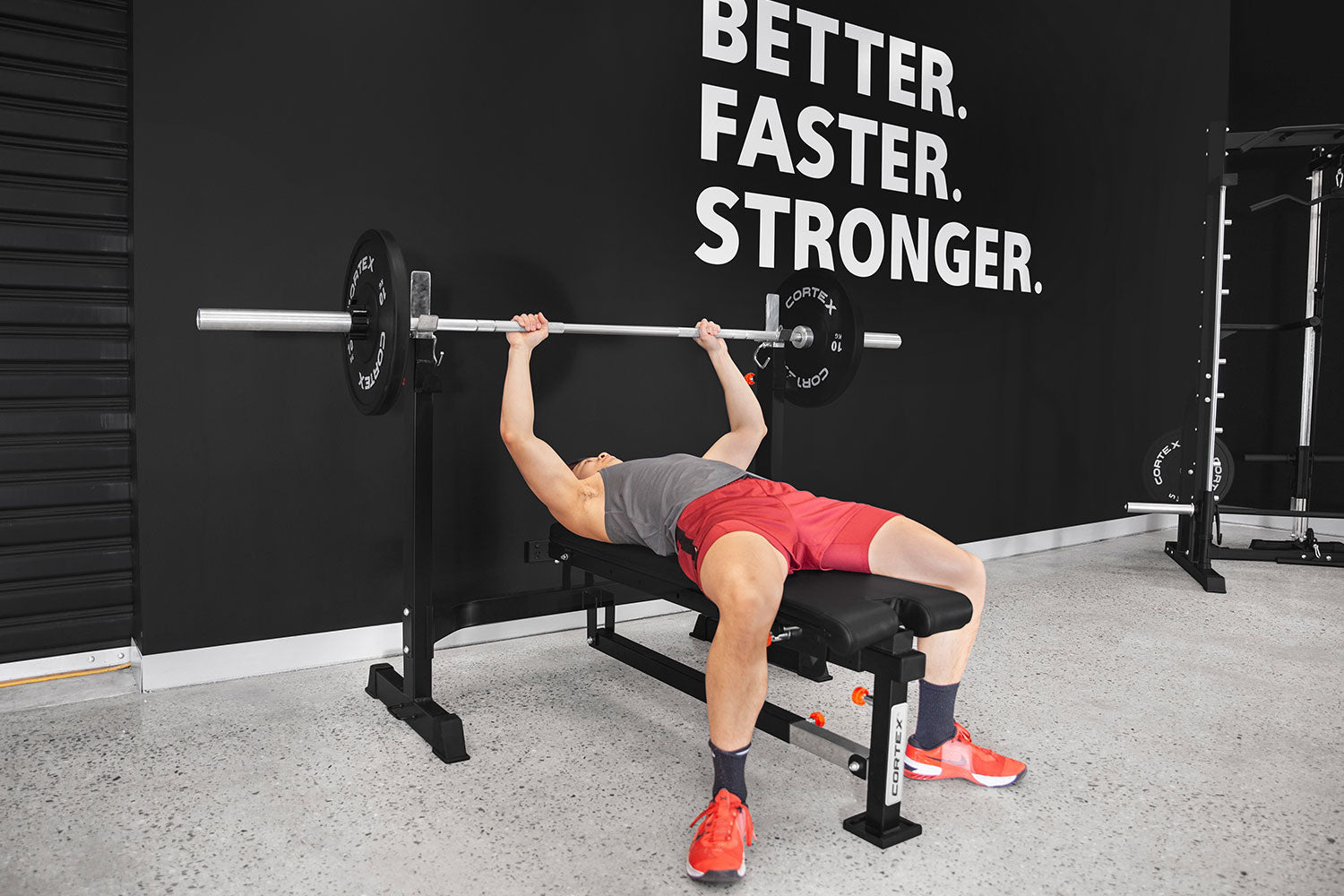

Bench presses provide a safe and comfortable support for strength workouts, giving you a secure base on which to train. CORTEX’s multi-function bench presses are versatile, and feature many different adjustments depending on the type of workout or the muscle groups being targeted. Bench press workouts provide focused muscle work in the upper body, especially the chest, arms and shoulders. Different variations of the bench press can also allow you to focus more on specific muscle groups.
Muscle Groups
The main players when it comes to bench presses will be your pecs, and will be doing most of the work throughout the exercise. These include the pectoralis major, which is a large muscle that takes up most of your chest, and is useful for the functionality of your arm. Underneath this is the pectoralis minor, which is one of your main stabiliser muscles in the chest and also assists in the rotation of the arms around the axis of the body.
The deltoidal muscles in the shoulders will also play a big role, working to assist the motion of the arms, and stabilise the movement.
At the top of movement, you’ll work in some exercise for the triceps, assisting to extend your elbows and lock the arms in place.
Having said all this, you can use different types of bench press to focus on specific areas.
Flat Bench Press

The traditional flat bench press is the classic upper body muscle-builder. For this you’ll be using a barbell, with or without additional weights, will work the pectoral muscles, the deltoidal shoulder muscles, as well as the biceps and triceps.
Close-Grip
Another variation is the close grip bench press, or narrow-grip. This involves moving your hands closer together on the bar so that they’re shoulder width apart. This type of bench press shifts the focus more to the triceps, the back of the upper arm, and the forearms.
Decline Bench Press
If your bench has a decline option, you can swap out the flat bench press for a decline bench press, which has the advantage of targeting your lower pecs and being easier on the shoulders and back.
Incline Bench Press
This will also require a bench with adjustable incline. Know that most of CORTEX’s exercise benches will feature incline options, but always check which equipment you’re working with to find something that will suit your workout. For this variation, set your bench to the incline setting at about a 45 to 60 degree angle. Make sure the bar is moving directly upwards throughout the exercise. This type of bench press will shift the focus to your upper pecs and shoulder muscles.
Dumbbell Bench Press

This variation will swap out the barbell with a pair of dumbbells, which has the advantage of a greater range of motion, and is more efficient at targeting strength imbalances between the two sides of your body. This will target a lot of the same muscles as a regular bench press, but will do more to activate your muscle stabilisers.
Which one is right for you?
As you make bench pressing a more regular part of your routine, you’ll naturally find areas you need to improve upon and points of focus. You’ll also find some variations to be more comfortable than others, which is important for reducing unnecessary tension in the upper body. Start off with the flat bench press, then start to think about whether you need further work in your chest or your arms. Your chest will benefit most from an incline or decline press, while close-grip or dumbbell bench press will see the most benefit in the arms.
Workout Frequency
So we know what muscles we’re working in each variation, but how many times a week should we be bench pressing for optimal muscle growth and maintenance? This will depend on your own fitness goals, as well as the rest of your resistance training regime. It will also change over time as your upper body strength develops and you find you aren’t able to reach the same level of muscle fatigue as quickly. If you’re just starting out with benching, once a week is plenty to start seeing some results. If you’re a more advanced trainer, and are looking for consistent and efficient returns on your workout, try to work bench presses into your routine around 2-3 times a week. This will give your muscles enough time to rest in between sessions. Anything more than 4 times a week is probably over-fatiguing the muscles, and will likely do more harm than good. If you’re still new to the world of weightlifting and bench presses, check out our guide on how to get started lifting weights.
Conclusion

Bench presses are one of your best options if you're looking to build and maintain muscle in the chest, shoulders and arms. The technique is relatively simple to learn, and can be modified to suit your personal fitness level. Remember to check out our guide on bench press technique if you’re just getting started. Otherwise, if you have any questions about CORTEX’s range of gym benches, feel free to contact our friendly team and we’ll assist in getting you everything you need.


















































